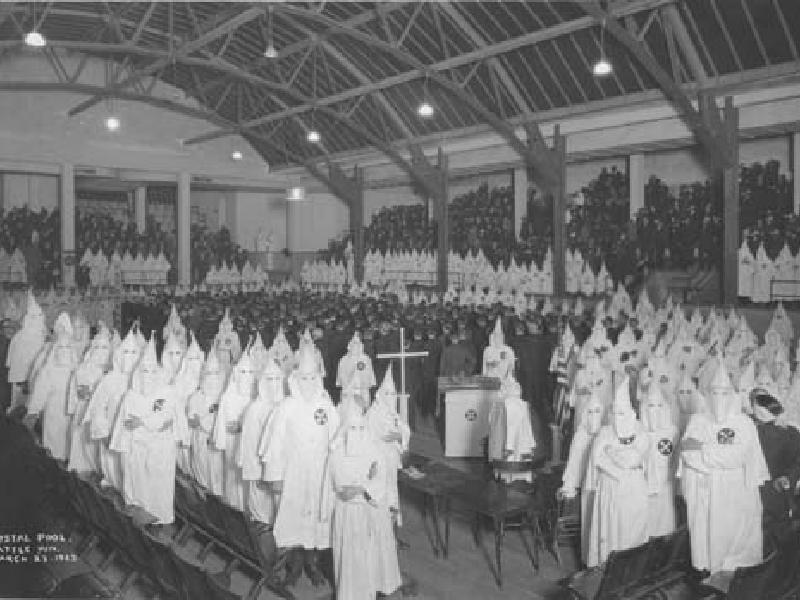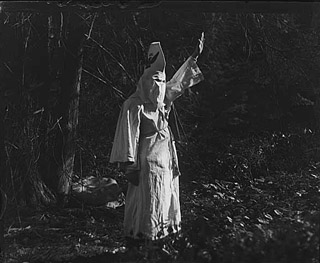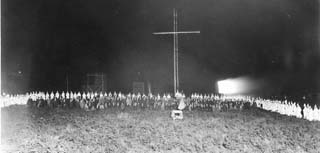

This special section of the Seattle Civil Rights & Labor History Project documents the history of Washington State’s 1920s chapter of the most infamous white supremacist organization in American history, the Ku Klux Klan (KKK).
The Washington State Klan during the 1920s was part of the second of three waves of KKK activity in America. The second KKK was founded in 1915 and gained significant membership immediately following World War I. Though short-lived, it was a powerful anti-immigrant, anti-Catholic, anti-radical, white supremacist organization that promoted “100 percent Americanism.” The second KKK claimed over 4 million members across the country; briefly dominated state legislatures of Colorado, Indiana, and Oregon; and in 1924 shaped presidential politics and helped pressure politicians to pass the most severe immigration restriction in the history of the United States. Following immigration restriction and a series of leadership scandals, the second KKK collapsed and was largely moribund by 1928.
The second KKK was a mass movement that invoked the memory of and built upon the first KKK, which was a terrorist organization founded by white supremacists in the U.S. South. The first KKK’s violent “night riding”– in which hooded vigilantes used lynchings, whippings, and torture to intimidate recently freed slaves and their white allies – played a crucial role in the disenfranchisement of African Americans at the end of the Civil War in the 1860s and 1870s and laid a foundation for the rise of Jim Crow segregation in the 1890s and 1900s. The second KKK also helped train some of the leaders who later formed the third KKK, a mainly Southern organization that rose up in the decades after World War II to murder and terrorize people in African-American communities, particularly civil rights movement activists. Klan members’ hoods, white robes, and burning crosses made them icons of American white supremacy and terrorism, and their legacy haunts us to this day.
The Washington State KKK during the 1920s was founded by organizers from Oregon, which had one of the strongest Klan chapters in the country at the time. The State Klan organized a series of massive public rallies in 1923 and 1924 that ranged from 20,000 to 70,000 people. While they publicly disavowed violence, Klan members participated in violent intimidation campaigns against labor activists and Japanese farmers in Yakima Valley and probably elsewhere. They put forward a ballot initiative in 1924 to prohibit Catholic schools that voters soundly defeated. And though most of the State’s Klan chapters collapsed in rancor following the defeat of their anti-private school initiative, a strong presence persisted in Whatcom and Skagit Counties throughout the 1930s. In the 1930s, some prominent leaders in the region’s KKK went on to become involved in the facist Silver Legion, or “Silvershirts,” a national movement that, while small, was quite active in Washington State. And there is evidence that the Klan in Bellingham helped pioneer intimidation practices that paved the way for anti-communist witch-hunts in the 1940s.
This special section on the KKK was created by Trevor Griffey and includes an online short book on the History of the KKK in Washington State by Trevor Griffey and article length essays by Brianne Cooke and Kristin Dimick. It presents dozens of rare photographs, newspaper articles, and documents thanks to gracious contributions from the Washington State Archives, the Washington State Historical Society, the Whatcom County Historical Society, and the Skagit River Journal.
- History of the KKK in Washington State , By Trevor Griffey The Washington State Klan had a meteoric rise and fall in the 1920s. The organization’s history shows how the Klan skillfully used spectacular mass meetings to gain members and influence public opinion.
- The Ku Klux Klan and the Anti-Catholic School Bills of Washington and Oregon, By Kristin Dimick The Oregon State Klan led a successful campaign in 1923 that made private schools illegal. In 1924, the Washington State Klan tried to duplicate this anti-Catholic campaign but voters rejected the initiative 2-1.
- Washington KKK Newspaper: The Watcher on the Tower, By Brianne Cooke From 1923 to 1924, the Washington State Klan published a newspaper out of Seattle called The Watcher on the Tower. Its propaganda shows how white supremacists in the Pacific Northwest promoted an organization associated with the U.S. South.
- Photographs: Rare photos courtesy of the Washington State Historical Society, the Skagit River Journal, and the Whatcom County Historical Society.
- Documents: Rare letters and telegrams to Governor Louis Hart regarding the Klan. Courtesy of Washington State Archives; Clippings from regional newspapers in Whatcom, King, and Thurston counties about Klan activities; and clippings regarding the Klan-supported anti-Catholic Initiative 49, which failed in 1924.
- The Watcher on the Tower: Selected 1923 clippings from the Washington State Klan’s weekly newspaper.





